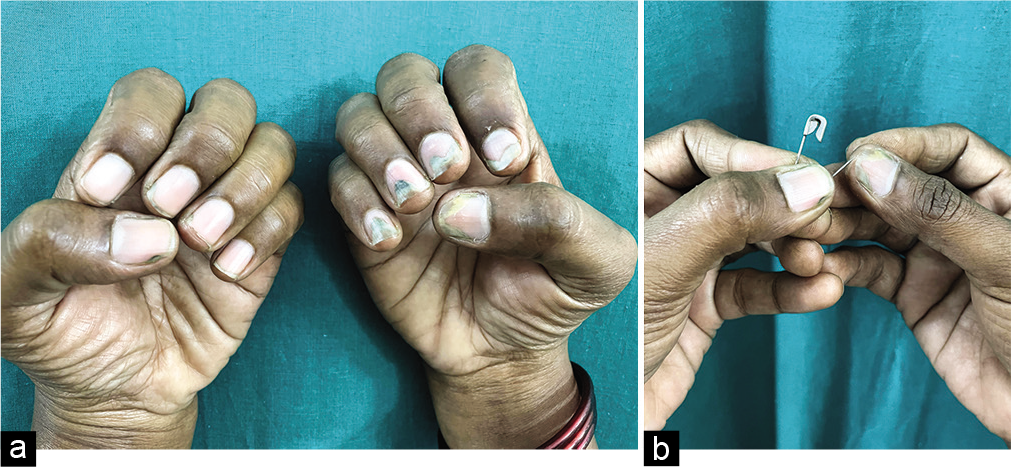Translate this page into:
Onycholysis semilunaris – A factitious nail disorder

*Corresponding author: Arunachalam Narayanan, Department of Dermatology (Skin and STD), Jawaharlal Institute of Postgraduate Medical Education and Research, Puducherry, India. narayanan359@gmail.com
-
Received: ,
Accepted: ,
How to cite this article: Narayanan A, Mathew S. Onycholysis semilunaris – A factitious nail disorder. CosmoDerma 2021;1:42.
A 40-year-old woman presented with well-defined, asymmetric, onycholysis of multiple nails over the right hand without any subungual hyperkeratosis, inflammation, or proximal discolouration [Figure 1a]. The patient used to manipulate her hyponychium with a safety pin to keep it clean [Figure 1b]. Based on the history and characteristic findings, a diagnosis of onycholysis semilunaris was made. This often under-recognized factitious nail disorder is due to recurrent cleaning of the distal nail fold which results in injury to hyponychium and pushes the distal nail fold backwards. The empty hyponychium acts as an empty recess accumulating dirt, reinforcing the habit of cleaning. Management includes cutting the nail to the point of attachment and keeping finger tips clean.[1]

- (a) Onycholysis of multiple nails over the right hand without any subungual hyperkeratosis, inflammation, or proximal discoloration, (b) manipulation of hyponychium by patient with a safety pin to keep it clean.
Declaration of patient consent
Patient’s consent not required as patients identity is not disclosed or compromised.
Financial support and sponsorship
Nil.
Conflicts of interest
There are no conflicts of interest.
References
- Nail tic disorders: Manifestations, pathogenesis and management. Indian J Dermatol Venereol Leprol. 2017;83:19-26.
- [CrossRef] [PubMed] [Google Scholar]





